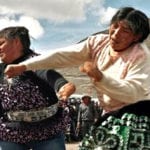 Movies and TV
Movies and TV  Movies and TV
Movies and TV  History
History 10 Things You Never Knew About Presidential First Ladies
 Movies and TV
Movies and TV 10 Zombie Movies That Will Actually Terrify You
 Humans
Humans 10 Times Scientists Were Absolutely Sure… and Absolutely Wrong
 Our World
Our World 10 Pivotal Moments for Life on Earth
 Movies and TV
Movies and TV 10 Most Realistic Medical TV Shows of All Time
 Creepy
Creepy 10 Eerie & Mysterious Ghosts of the Pacific Coast
 Weird Stuff
Weird Stuff 10 Typos That Accidentally Changed History
 History
History 10 Times Trickery Won Battles
 Technology
Technology 10 Awesome Upgrades to Common Household Items
 Movies and TV
Movies and TV 10 Movie Flops That Found Their Way to Cult Classic Status
 History
History 10 Things You Never Knew About Presidential First Ladies
 Movies and TV
Movies and TV 10 Zombie Movies That Will Actually Terrify You
Who's Behind Listverse?

Jamie Frater
Head Editor
Jamie founded Listverse due to an insatiable desire to share fascinating, obscure, and bizarre facts. He has been a guest speaker on numerous national radio and television stations and is a five time published author.
More About Us Humans
Humans 10 Times Scientists Were Absolutely Sure… and Absolutely Wrong
 Our World
Our World 10 Pivotal Moments for Life on Earth
 Movies and TV
Movies and TV 10 Most Realistic Medical TV Shows of All Time
 Creepy
Creepy 10 Eerie & Mysterious Ghosts of the Pacific Coast
 Weird Stuff
Weird Stuff 10 Typos That Accidentally Changed History
 History
History 10 Times Trickery Won Battles
 Technology
Technology 10 Awesome Upgrades to Common Household Items
Top 10 Misconceptions About Christmas
Christmas is a time for friends, family, cheer, giving, and general annoyance. After centuries of history, a lot of traditions have grown up around Christmas, and a lot of misconceptions have, too. They’re repeated year after year, and we’re going to clear some of them up.
10Christmas Spread Along With Christianity

The oft-repeated story is that as Christianity spread, it engulfed the ancient pagan ways and holidays, converting but letting people keep their celebrations and their holidays. The winter solstice became a celebration of the birth of Christ.
That’s only half true. Christianity existed for hundreds of years before the idea of celebrating Christ’s birth occurred to anyone. Early Christian writers in Rome made their stance on celebrating birthdays quite clear—it was a disgusting, despicable, pagan thing to do. It was considered much more important to celebrate a person’s death rather than their birth. That’s one reason that Easter and Good Friday came first, along with the feasts of the saints.
The first reference to the date of the birth of Christ came in the year 200. An Egyptian text listed it as May 20. Other contemporary texts give other dates, but they agree that it was sometime in April or May. Only in the middle of the fourth century did a Roman almanac give Christ a December 25 birthday based on interpretation of a gospel, and the celebration took a bit longer than that to catch on.
By the 17th century, Christmas was in a form that would at least be of passing familiarity today. There were presents, carols, plays, and mummers, and lords would open their doors to the poor in a show of generosity. But this was all absolutely forbidden by the most religious Christians. The Puritans didn’t just forbid the celebration because it wasn’t as somber and religious as they hoped—they called it downright heretical, citing (correctly) that there was no biblical precedent for it. And they even won. Christmas was canceled in 1647.
9Christmas Replaced A Pagan Holiday

As we said, the popular story is that Christmas is December 25 because it replaced the winter solstice and allowed pagan worshipers to keep their celebrations. But intriguing evidence refutes this idea.
One theory connects the date with a declaration from the Roman emperor Aurelian, which established a feast day for Sol Invictus, or the Unconquered Son. However, Aurelian was definitely anti-Christian, and his declaration happened after Christmas had already been established
Also, when Christmas began, Christianity wasn’t gently stepping into the pagan realm that it was trying to replace. In fact, it was trying to distance itself from pagan worship as much as possible. The two wanted nothing to do with each other, and Christianity wasn’t catering to or accepting anything of the pagans, who were conducting sacrifices and violently persecuting them. Gradually, pagan traditions were accepted into Christmas celebrations, but not till the 12th century was that put forward that the reason Christmas falls on December 25.
So where’d the date come from? Christ was said to have been conceived and crucified on the same date. That was on March 25 in the Roman calendar. Nine months after March 25 is December 25.
8The North Pole Is An Icy Fortress

According to the US Navy and their research on the Arctic, the North Pole could be completely ice-free as early as 2016. That’s 84 years sooner than other estimates have projected, and that means Santa’s toy factory and summer home is going to make even less sense than it currently does.
The Navy’s estimates are based on the average temperature of the Arctic warming much faster than the temperature around the rest of the world. Other organizations, like the Ocean Institute at the University of Western Australia, agree.
The massive jump in melting at Santa’s lair is partially because of methane released into the atmosphere due to further ice melting at the East Siberia Arctic shelf. The methane was once sealed in by the permafrost there, but with its release, the temperature at even the deepest depths we’re measuring is significantly rising.
The numbers are pretty staggering. Since 1980, the Arctic has lost about 40 percent of its sea ice. Pretty soon, we’ll have to come up with a new story for where Santa lives—along with having to deal with some rather more serious consequences of the melting ice cap.
7The Poinsettia Is Incredibly Dangerous

The poinsettia is almost as common a Christmas decoration as a tree in the family room. If you have pets or small children, you’ve likely heard that they’re at risk just by having the plant in the house. The poinsettia is highly toxic and extremely poisonous, according to common belief. Any curious explorers can end up in the emergency room after ingesting the plant.
That’s not true. The poinsettia has only a mild toxicity to pets, and ingesting the white sap of the plant won’t be deadly or poisonous. It might result in a little drooling, some discomfort around the mouth, or (in extreme cases) vomiting and diarrhea—but it’s not deadly.
The rumor goes back to a single unproven story from 1919. According to the urban legend, a two-year-old child of an Army officer died after eating a leaf from the poinsettia. The story has never been established as real, and organizations like the US Consumer Product Safety Commission have found no reason for the plants to even carry warning labels. Yet the myth has persisted.
It also overshadows another Christmas plant that can be more dangerous—mistletoe. Both American and European mistletoe can cause anything from mild poisoning symptoms (vomiting and abdominal pain) to low blood pressure, cardiac issues, and collapse. Pet deaths from eating mistletoe have also been confirmed.
6Everything About The Three Kings
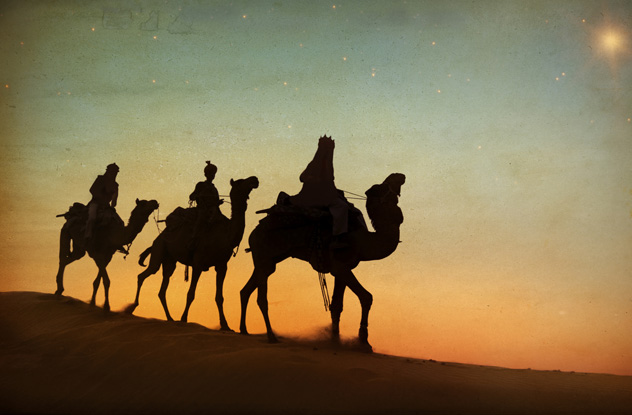
One of the most popular images of Christmas is the Three Wise Men, riding camels, following the Star of Bethlehem on their way to the baby Jesus. That image is absolutely not supported by the Bible.
The story of the wise men appears only in Matthew 2:1–12. According to Matthew, wise men visit King Herod, ask for the King of the Jews, and find him in a home with his mother, where they give him gold, incense, and myrrh. And that’s about all Matthew says.
He doesn’t say that there were three of them, that they were kings, or that they rode camels—all things that we repeat every Christmas. They’re referred to as magoi, the Latin word from which we get “magic.” Far from being kings, they might have been astrologers.
Original depictions of the magoi began in the second century, but not until the third century did they take on the trappings of royalty. They’ve also been variously assigned the roles of representing the three races created by Noah’s three sons, but the idea of three kings likely just came from the mention of three gifts.
They’re also not mentioned as being at the birth of Christ, though we always see them popping up at Nativity scenes. According to Matthew, they found the baby and his mother in a house. Based on Herod’s genocide of male children less than two years old, they likely showed up in the spring or summer after the birth.
5Suicide Rates Go Up
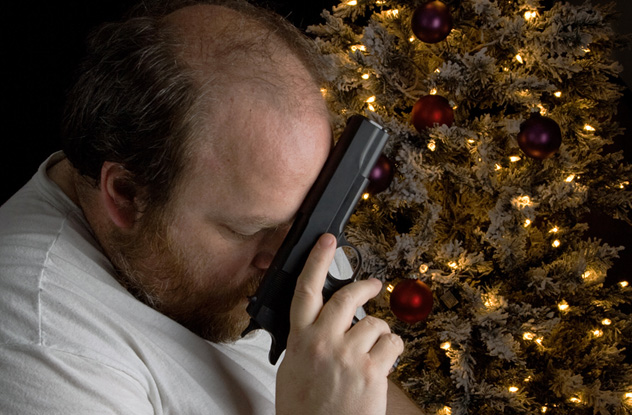
Christmas might be a time for families, holiday cheer, and excitement, but we’ve all heard that suicide rates go up during the season. The statistic sounds believable. Plenty of sadness surrounds the holiday, from those who can’t have the holiday they want to people going through it for the first time after a loss.
The University of Pennsylvania and the Centers for Disease Control and Prevention have found that, actually, the opposite is true. Suicide patterns based on three decades of data show that the months with the lowest rates are November, December, and January. The peak is in spring and summer.
The pattern may be due to feelings of community and family during the holiday season. We see friends and family whom we might not see at any other time during the year, so many people with suicidal thoughts have an emotional support group during the season.
That said, a person has a higher chance of dying on Christmas or on New Year’s Day than on any other day—but not from suicide. Many deaths on these days are due to respiratory diseases, digestive diseases, and cardiac distress. University of California researchers suggest several reasons for this. Holidays put extra stress on the body. Hospitals, emergency care clinics, and emergency rooms are generally understaffed during the holidays. Plus, people often skip hospital visits on these days, reluctant to interrupt family gatherings with their emergency.
4 Christmas Trees Are An Environmental Issue
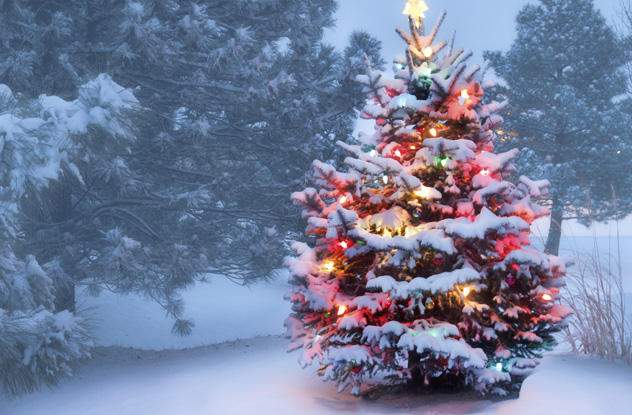
Should you buy an artificial tree or a real one? Proponents of the artificial tree point to saving a real tree’s life, reusability, and the lower carbon footprint. Those who swear by real trees say that farm-raised trees are destined to end their lives decorated with tinsel and ornaments, and a real tree’s environmental contributions while growing are greater than the costs of manufacture.
Both camps are wrong. Or, depending on your point of view, both camps are right.
There are pros and cons to the use of each. Real trees provide a whole host of benefits while they’re growing, absorbing carbon dioxide and such, while the manufacture of artificial trees dumps a whole host of chemicals into the atmosphere. But, if you have to drive miles and miles to find the right real tree, that negates much of the good it’s been producing. If you use an artificial tree for years and years, that’s good . . . but buying a new artificial tree every few years means that you’re not doing the environment any favors.
Because most trees cut for Christmas are from farms that grow them just for that purpose, it’s not like you’re adding to a deforestation problem. Then, factor in that Christmas tree farms add to green space and provide homes for small animals and birds—but also often require the use of pesticides and other chemicals.
Ask experts, and even if they’re the executive director of the pro–artificial tree American Christmas Tree Association with good reason to be biased, they’ll likely shrug and say it doesn’t really matter. Either might be a tiny bit worse environmentally depending on your specific circumstances. In the end, ride your bike to work for a couple of days, and you’ll make up any difference one way or the other.
3The Moons In Christmas Scenes
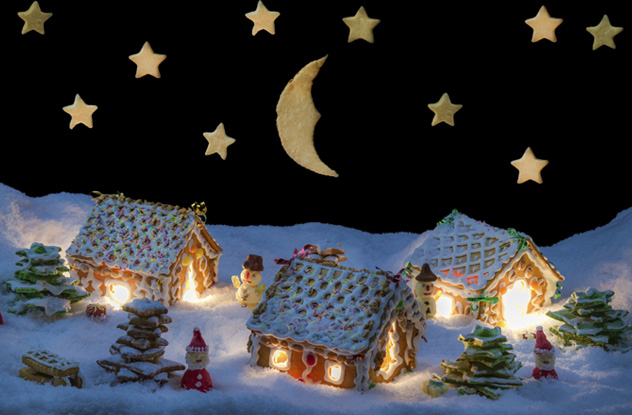
Take a look at your Christmas cards. They’re probably scenes of children out caroling, riding in a sleigh, or unwrapping their gifts. Now look at the Moon in them.
Any card or image with a waxing or waning moon is probably wrong. That moon isn’t high in the sky until about 3:00 AM, so unless the fun-loving Christmas scene happens at that ungodly hour, it’s wrong.
Dutch astronomers examined cards in 2011 and noted that America tends to get it the most right, but only because American images tend to depict full moons that are in the sky throughout the night. Overall, 40–65 percent of images were incorrect.
The Moon isn’t the only common Christmas sight that’s often wrong. Christmas is a bad time for the snowflake, which is often depicted as going against one of the fundamental laws of nature. Snowflakes can only be hexagonal, but many flakes seen on everything from Christmas cards to wrapping paper are depicted with the wrong number of sides. We’ve had photographs of snowflakes since 1885, so we don’t have much excuse for getting this one wrong.
2The Classic Nativity Scene
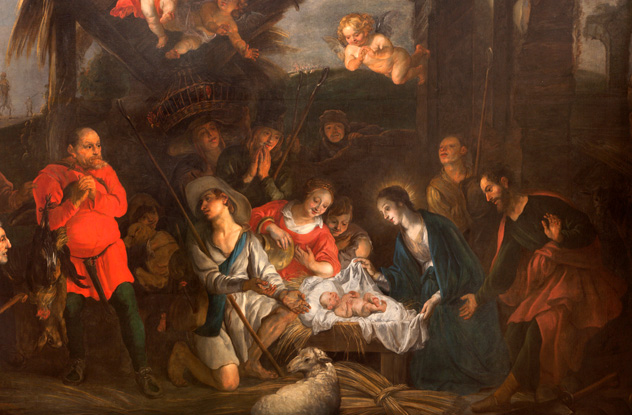
For something so closely linked to the religious meaning of Christmas, the Nativity scene isn’t at all biblically accurate.
Two gospels talk about the famous scene: Luke and Matthew. Matthew, as we mentioned, describes the wise men. Luke mentions shepherds going to see the newborn baby. But the two groups were never together at the same time, there’s no specific mention of animals, and the gospels say nothing about an angel witnessing the birth.
The images of the nativity scene come from early art that took some liberties. Live nativities only began in 1223, when St. Francis of Assisi staged the first one. At the time, masses were Latin and inaccessible to most people. Instead of learning about the Bible in church, they learned about it through plays like the nativity.
Two animals in particular are almost always included in the nativity scenes—the donkey and the ox, neither of which are mentioned in the Bible. In early depictions, they warmed the baby with their breath and their body heat. But in other paintings, they seem to be acting a little less respectful—especially well into the Renaissance period. In some manuscript illuminations, they try to eat the clothes and blankets of the baby, and on the roof of Nantwich church in England, they’re wholeheartedly fighting over the blankets. It’s thought that the donkey came to represent the Jews—doubters of the divinity of Christ.
1Santa’s Reindeer

Santa Claus, or so we’re told, was based on the original figure of Saint Nicholas. But flying reindeer don’t quite fit with the idea of a kindly saint. According to Sierra College professor John Rush, that’s because the reindeer weren’t added as part of a Christmas story or in relation to Saint Nicholas. Instead, they were a product of magic mushrooms.
Throughout Siberia—reindeer’s natural stomping grounds—one of the most ancient of shamanic traditions included the gathering, drying, and distribution of the Amanita muscaria mushroom. The distinctive mushroom, which grows at the base of trees, is red with white flecks (which is said to explain the traditional depiction of Santa as wearing a red suit with white lining). Rush says that the distribution of the dried shrooms led to some fanciful hallucinations, including some that involved one of the most common animals in the area—the reindeer. Tripping tribes began telling stories about flying reindeer that showed up with their presents.
Others point to a much more sobering source for the flying reindeer myth—the mind of Clement Clarke Moore, who wrote “The Night Before Christmas” in 1822. The first compilation of all things that make Santa Claus who Santa Claus is, the poem was originally titled “A Visit from St. Nicholas” and is considered by many to be the definitive source for Santa Claus lore.
But he had to get the idea from somewhere, right?








